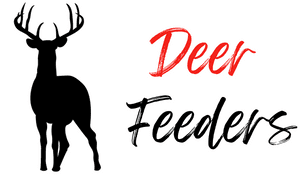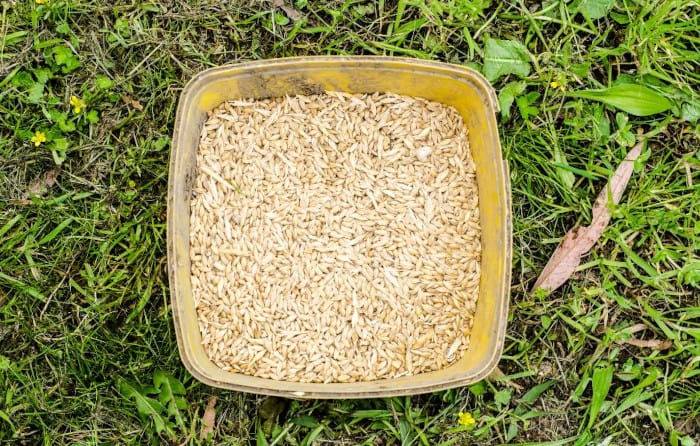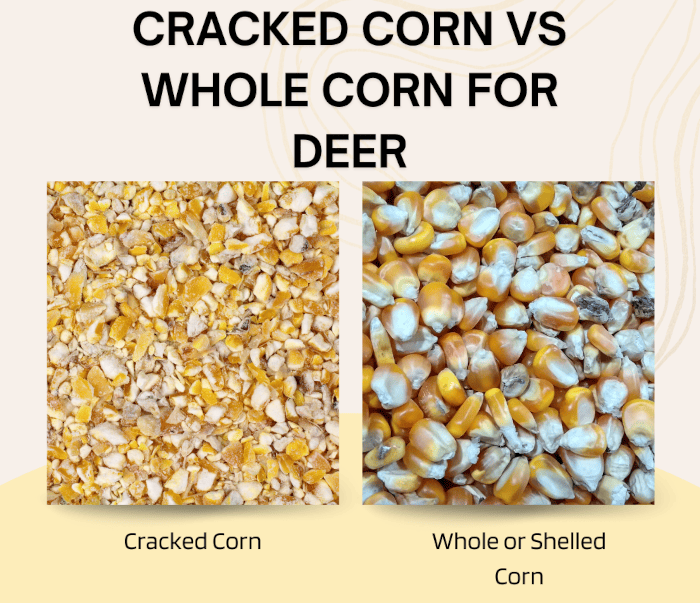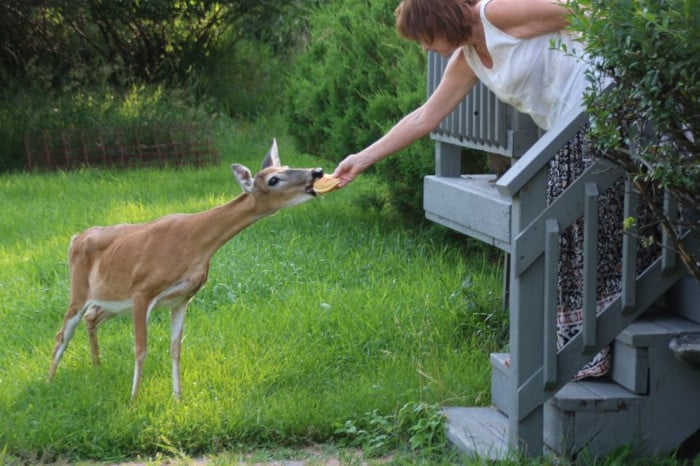Setting up deer feeders or a corn pile involves time, effort, and money. For these reasons, most hunters have questions about how soon they may start to see deer coming to their feeders or corn pile. One of the most common questions that I see asked is: how long does it take deer to find corn?
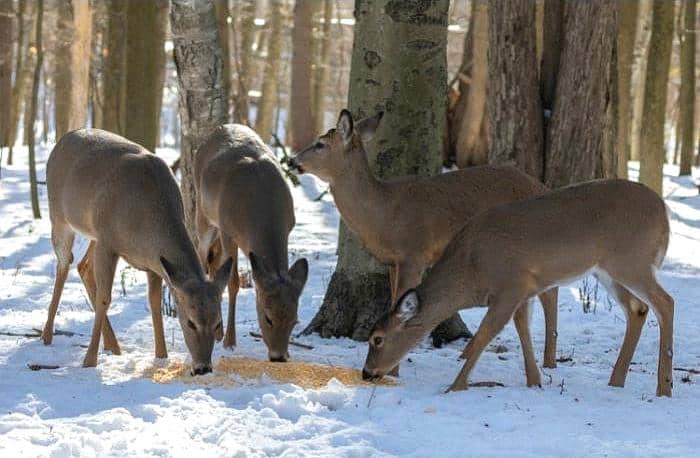
It’s a worthwhile question, and several factors can play a role in answering that question. Before I get into some answers, let’s first talk about how deer locate corn because it also plays a role in the answer.
How Deer Find Corn
Biologists believe that deer locate corn (and other food sources) via two methods:
- A deer’s sense of smell
- Following other deer in the herd
Let’s talk about each location method in more detail:
Deer Sense of Smell
If you’re a hunter, then you probably have already heard about a deer’s incredible sense of smell, but is their sense of smell really that good?
The short answer is yes. As a matter of fact, I think most people have trouble grasping just how much better their sense of smell is compared to ours.
Here are a few facts about a deer’s sense of smell that you may not be aware of:
- Researchers at Mississippi State University’s Deer Lab have reported that Whitetail Deer have an olfactory system that is about 1000 times more sensitive and accurate than a human sense of smell.
- In addition, those same researchers have indicated that deer can take in and identify up to six different scents at a time.
- Deer biologists estimate that a deer can smell a human being scent at least ¼ of a mile away under normal conditions. However, that distance can increase up to ½ a mile under windy or high humidity conditions.
- Biologists have discovered a link between an animal’s sense of smell and the amount of surface area in its olfactory area. For example, humans have an estimated 2 inches of nasal surface area, while dogs have anywhere from 30 to 36 inches of nasal surface area. Compare those numbers to deer, who have 42 to 48 inches of nasal surface area (depending on the specific sex and size of the deer), and one begins to understand the effectiveness of a deer’s sense of smell.
- Due to the lateral position of their nostrils and the size of the nostrils, deer can smell directionally. By this, I mean that as scents travel through both nostrils, it allows deer to determine the direction that the scent is originating quickly. Therefore, when you see a deer flare its nostrils, it usually means that it’s picked up a specific smell and is not trying to identify a direction or source direction for the scent.
Following Other Deer to Food
As a species, Whitetail deer are herd-based animals that prefer to live in a group setting with others of their species. While there may be times where bucks will separate from the herd or group, deer as a species are herd friendly.
Because of this herd mentality, deer will often follow the herd as they search for food. For example, if a deer in the herd has already discovered corn in a feeder or in a pile, that deer may lead the herd back to that specific food source to feed.
I’ve witnessed this behavior via trail camera and in the stand as well. One of the properties that I hunt had an older doe in a herd with a noticeable and defining black spot just above her tail. It was uniquely identifying, and I nicknamed her “Spot” (originally creative, huh?).
Just before archery season started, I went in and deployed a new deer feeder at one end of the property. According to my trail camera, Spot was the first deer to find the new feeder and feed. The camera caught her returning the following morning, leading six others does to the feeder for an early morning meal.
How Far can Deer Smell Corn?
This is a tricky question to answer as deer biologists and deer researchers don’t have any concrete evidence to determine precisely how far away a deer can smell corn (at least not yet).
However, if we use the above-mentioned deer researcher information reporting that a deer can smell a human from ¼ to ½ a mile away, we can estimate that deer can detect the smell of corn from a long distance as well.

While I can’t provide a specific distance, I can say this: I’ve put out a new corn pile with a camera on it and seen the first deer show up on camera in just under three hours after I left the pile. That just under three-hour timeframe is the fastest discovery of corn that I’ve personally seen to date.
Deer biologists believe that some other factors play a role in the distance that deer can scent or smell corn. Those factors include:
- The amount or volume of corn
- The deer’s gender
- The deer’s age
Let’s discuss each factor in greater detail:
Amount or Volume of Corn
The greater the amount of corn distributed by the feeder or available in a corn pile, the more corn scent in the air. A feeder that only dispenses a small amount of corn at each feeding offers less corn scent than a corn pile containing several pounds of corn.
This more significant volume of corn could potentially work against a hunter because other animal species like squirrels, raccoons, and bears also like to feed on corn.
Deer Gender
There are several theories out about which gender of deer has the better nose. Some deer biologists theorize that, since bucks have larger heads than does, they also have a larger olfactory organ or more square inches of nasal area.
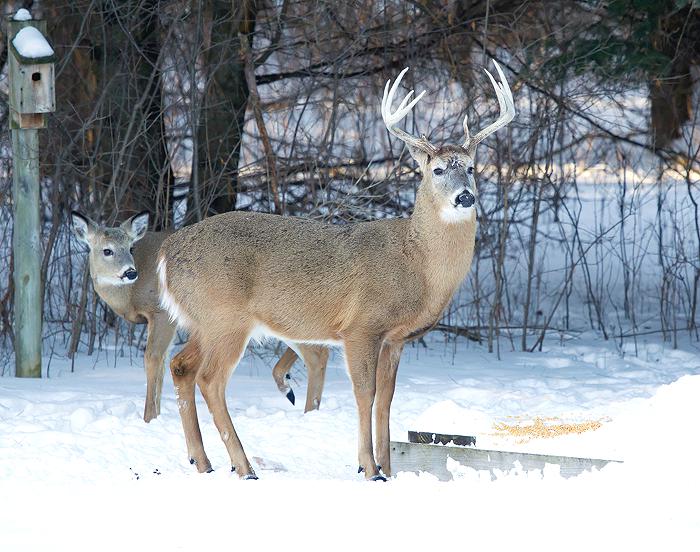
In addition, deer researchers also note that a buck can detect a doe in heat during the mating season (commonly called the rut) from distances of ½ mile or more, furthering the theory that male deer (bucks) have a stronger sense of smell compared to a doe.
The Age of the Deer
As deer age and survive different situations, it’s believed that they expand their internal scent library of predators and dangers. These life experiences are believed to be one of the reasons that older, mature bucks make it long enough to become mature bucks.
In addition, some deer researchers believe that older, more experienced deer have a better or more sensitive sense of smell when it comes to locating food and detecting dangerous situations. But, of course, most of that “experience” and caution goes out the window during the rut.
So, theoretically, an older buck may be able to pick up the scent of corn farther away than a younger buck or immature doe.
Does Mixing a Deer Attractant into Corn Help?
There are several products on the market called deer attractants. These attractants are generally broken down into two groups:
- Female deer scents
- Food-based scents
Let’s focus on the food-scented deer attractants since the doe scent-based attractants are not made to work in conjunction with deer feed or deer corn.
Food-based attractants are made using the smells of food types that deer enjoy. Examples of these scents are apple-based, acorn-based, corn-based (especially sweet corn), and molasses-based, to name a few.
There are many flavor-based food attractants on the market that are designed to either be utilized as a stand-alone attractant or mixed in with deer feed.
While I have hunting buddies who swear by feed attractants, my own experiences have been a little more hit and miss. I’ve had situations where I tried out a new attractant, but the number of deer on camera at a feeder did not increase or decrease. However, I’ve had other situations where just a little bit of attractant at the corn pile caused the number of deer on camera at a feeder to nearly double. Therefore, I don’t feel like I have enough data to definitively report that food attractants work 100% of the time.
These days, I predominately use just plain deer corn, but do add attractants to corn some times.
However, if you wanted to try a commercially made deer attractant on your corn, I put together a list of my 10 favorite deer attractors for corn here.
How Long Does it Take Deer to Find Corn?
I don’t know that there are any hard and fast answers to that question, and I also believe that certain variables may play a role in how fast deer locate your corn pile or deer feeder. Those variables include:
- The number of deer in the area
- The amount of corn being put out
- The time of year
Here are my thoughts on these variables:
The Number of Deer in the Area
The deer population in an area can fluctuate greatly depending on factors like food sources, hunting pressure, terrain, etc. For example, in an area with a smaller volume of deer, it may take longer than average for those deer to find a new food source once it becomes available.
One of my college roommates lives in the western part of North Carolina, which has a much smaller deer population compared to the eastern part of North Carolina where I live. As we periodically compare notes and talk deer hunting on the phone, he shared that it takes the deer on his leased land between five and seven days to find a new corn feeder or corn pile that he puts out. Where I hunt, three days is about the longest time that I’ve witnessed for deer to show up on camera at a new deer feeder or corn pile that I set up.
The Amount of Corn Being Put Out
I touched on this briefly before, but I firmly believe that the amount or volume of corn being put out also plays a role in how fast the deer locate the corn.
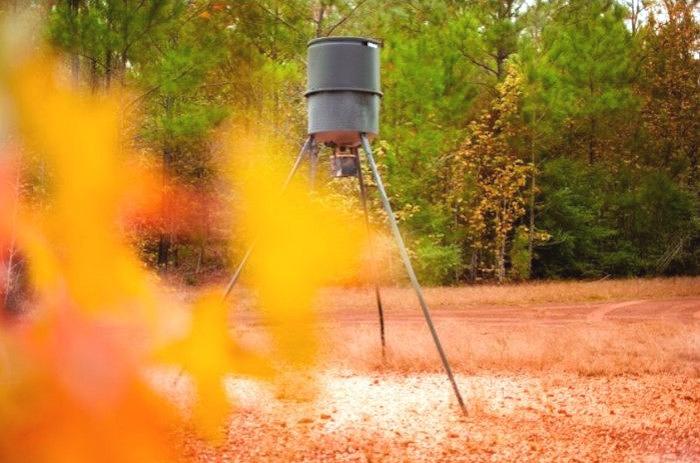
I previously mentioned that the quickest I had personally seen deer locate corn at a new feeder was just under three hours. In that case, I had put out two 50-pound bags of corn for a new corn pile that I set up. So I’m relatively confident that the volume of corn in that pile played a role in how fast the first deer located it.
The Time of Year
The time of year can also play a role in how quickly deer locate newly deployed corn due to the amount of food available for that time of year or season.
For example, if you set up a new deer feeder in the summer, you may notice that it can take a week or two for deer to find a new feeder with corn. Part of the reason for the longer timeframe is tied to the amount of natural food available for deer in the summer.
However, it’s a different story in the winter as typical food sources become scarce and harder to locate. Therefore, a newly deployed corn feeder will most likely be located by deer more quickly in the winter because they are more aggressively searching for food.
My experience has shown a range of times in terms of how quickly deer come to a new corn feeder or corn pile. The fastest that I’ve personally seen was the 3-hour discovery example I previously mentioned. However, that’s not typical and certainly not common.
The deer in my area generally find a new corn pile or new deer feeder sometime between 1-3 days.
FAQS
Here are some commonly asked questions that I see about the time frame that it takes deer to find corn that has been put out:
How long does it take deer to find a corn feeder?
Several variables can play a role in how quickly deer find a new corn feeder. In my experience, it takes the deer in my area between 1 to 3 days on average to find corn that has been put out. This is an average estimate as I’ve seen deer locate newly placed corn in less than a day, and I’ve seen it take longer than three days.
Obviously, that may be different in your area due to differences in the deer population, the weather, the temperature or season, etc.
Can deer smell corn?
Deer have an outstanding sense of smell and can detect the scent of corn from a long-distance away. Deer biologists and researchers are not entirely sure the exact distance that deer can detect the scent of corn, but, given the fact that a deer’s sense of smell is better than a bloodhound’s, it’s probably safe to assume that they can smell corn several hundred yards away.
